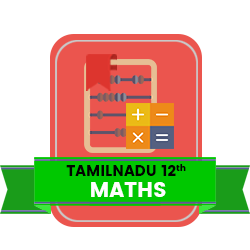7th Standard CBSE Social Science Subjects Question Paper Software Subscription
QB365 covers complete information about 7th Standard CBSE Social Science Subject for 2024-2025 Exam. Question Bank includes 7th Standard CBSE Social Science Subjects Book back, exercise, Updated Question types MCQ, Case Study , Assertion and reason with solution, Previous year asked questions, all possible questions and other key points also. All question with detailed answers are readily available for preparting Maths question papers.
All Chapters Covered

Create Unlimited Question Papers

Access anywhere anytime

Multiple Pattern Question Papers
Share your Question Paper

Font size, line spacing, watermark etc,
Our Other Subjects for 7th Standard CBSE
7th Standard CBSE Social Science Chapters / Lessons
HIS - Tracing Changes Through a Thousand Years
HIS - New Kings And Kingdoms
HIS - The Delhi Sultans
HIS - The Creation of an Empire the Mughal Dynasty
HIS - Rulers And Buildings
HIS - Towns, Traders And Craftspersons
HIS - Tribes, Nomads And Settled Communities
HIS - Devotional Paths To The Divine
HIS - The Making of Regional Cultures
HIS - Eighteenth-Century Political Formations
GEO - Environment
GEO - Inside Our Earth
GEO - Our Changing Earth
GEO - Air
GEO - Water
GEO - Natural Vegetation And Wildlife
GEO - Human Environment-Settlement, Transport and Communication
GEO - Human Environment Interactions: The Tropical And The Subtropical Region
GEO - Life In The Temperate Grassland
GEO - Life In The Deserts
CIV - On Equality
CIV - Role Of The Government In Health
CIV - How The State Government Works
CIV - Growing Up As Boys And Girls
CIV - Women Change The World
CIV - Understanding Media
CIV - Understanding Advertising
CIV - Market Around Us
CIV - A Shirt In The Market
CIV - Struggles For Equality
7th Standard CBSE Social Science Chapters / Lessons Syllabus
Our Pasts - II
Where, When and How - (a) Terms used to describe the subcontinent and its regions with a map. (b) An outlining of the time frame and major developments. (c) A brief discussion on sources.
New Kings and Kingdoms - (a) An outline of political developments (b) 700-1200 (c) A case study of the Cholas, including agrarian expansion in the Tamil region.
The Sultans of Delhi - a) An overview. (b) The significance of the court, nobility and land control. (c) A case study of the Tughlaqs.
The Creation of An Empire - (a) An outline of the growth of the Mughal Empire. (b) Relations with other rulers, administration, and the court. (c) Agrarian relations. (d) A case study of Akbar.
Architecture as Power: Forts and Sacred Places - (a) Varieties of monumental architecture in different parts of the country. (b) A case study of Shah Jahan’s patronage of architecture.
Towns, Traders and Craftsmen - (a) Varieties of urban centres - court towns, pilgrimage centres, ports and trading towns. (b) Case studies: Hampi, Masulipatam, Surat.
Social Change: Mobile and settled communities - (a) A discussion on tribes, nomads and itinerant groups. (b) Changes in the caste structure. (c) Case studies of state formation: Gonds, Ahoms
Popular Beliefs and Religious Debates - (a) An overview of belief-systems, rituals, pilgrimages, and syncretic cults. (b) Case Study: Kabir.
The Flowering of Regional Cultures - (a) An overview of the regional languages, literatures, painting, music. (b) Case study: Bengal.
New Political Formations in the Eighteenth Century - (a) An overview of the independent and autonomous states in the subcontinent. (b) Case study: Marathas
Social and Political Life - II
Democracy - Historical - Formal Equality - Decision Making mechanisms - Accommodation of differences. - Enhancing human dignity - Universal Adult Franchise - Elections - Political parties - Coalition Governments.
State Government - Main functionaries-broad outline of the role of the Chief minister and the council of ministers - The nature of the role played by the government – regarding resources and services - Factors involved in distribution of resources/ services - Access of localities and communities to resources/ services.
Understanding Media - providing information, providing forum for discussion/debate creating public opinion - Commercial Advertising and consumerism, Social advertising
Unpacking Gender - Social Aspects - family, community, schools, public spaces, understanding Inequality: The role of gender in creating unequal and hierarchical relations in society - Economic Aspects - gender division of labour within family, value placed on women’s work within and outside the home, the invisibilisation of women’s labour
Markets Around Us - On retail markets and our everyday needs - On role and impact of wholesale markets how are these linked to the above - People’s access to markets depends upon many factors such as availability, convenience, credit, quality, price, income cycle etc. Examine the role of an observable wholesale market such as grain, fruit, or vegetable to understand the chain of activities, the role of intermediaries and its impact on farmer -producers.
Resources and Development - II
Environment - Environment in its totality: natural and human environment.
Inside our Earth - Natural Environment: land – interior of the earth, rocks and minerals; earth movements and major land forms. (One case study related with earthquake to be introduced)
Air - composition, structure of the atmosphere, elements of weather and climate – temperature, pressure, moisture and wind. (One case study related with cyclones to be introduced)
Water - fresh and saline, distribution of major water bodies, ocean waters and their circulation. (One case study related with tsunami to be introduced)
Natural Vegetation and Wildlife - Natural vegetation and wild life.
Human Environment - Settlement, Transport and Communication - Human Environment: settlement, transport and communication.
Human Environment Interactions - The tropical and sub tropical region - Human – Environment Interaction: Case Studies – life in desert regions – Sahara and Ladakh; life in tropical and sub-tropical regions – Amazon and Ganga-Brahmaputra; life in temperate regions – Prairies and Veldt
History-Tracing Changes Through A Thousand Years
New And Old Terminologies-Historians And Their Sources-New Social And Political Groups-Region And Empire-Old And New Religions-Thinking About Time And Historical Periods.
History-New Kings And Kingdoms
The Emergence Of New Dynasties-Administration In The Kingdoms-Prashastis And Land Grants-Warfare For Wealth-A Closer Look: The Cholas
History-The Delhi Sultans
Finding Out About The Delhi Sultans-From Garrison Town To Empire:The Expansion Of The Delhi Sultanate-A Closer Look: Administration And Consolidation Under The Khaljis And Tughluqs-The Sultanate In The Fifteenth And Sixteenth Centuries
History-The Mughal Empire
Who Were The Mughals-Mughal Military Campaigns-Mughal Traditions Of Succession-Mughal Relations With Other Rulers-Mansabdars And Jagirdars-Zabt And Zamindars-A Closer Look: Akbar’s Policies-The Mughal Empire In The Seventeenth Century And After
History-Rulers And Buildings
Engineering Skills And Construction-Building Temples, Mosques And Tanks-Why Were Temples Destroyed-Gardens, Tombs And Forts-Region And Empire
History-Towns, Traders And Craftspersons
Administrative Centres-Temple Towns And Pilgrimage Centres-A Network Of Small Towns-Traders Big And Small-Crafts In Towns-A Closer Look: Hampi, Masulipatnam And Surat- A Gateway To The West: Surat-Fishing In Troubled Waters: Masulipatnam-New Towns And Traders
History-Tribes, Nomads And Settled Communities
Beyond Big Cities: Tribal Societies-Who Were Tribal People-How Nomads And Mobile People Lived-Changing Society: New Castes And Hierarchies-A Closer Look-Conclusion
History-Devotional Paths To The Divine
The Idea Of A Supreme God-A New Kind Of Bhakti In South India – Nayanars And Alvars-Philosophy And Bhakti-Basavanna’s Virashaivism-The Saints Of Maharashtra-Nathpanthis, Siddhas And Yogis-Islam And Sufism-New Religious Developments In North India-A Closer Look: Kabir-A Closer Look: Baba Guru Nanak
History - The Making Of Regional Cultures
The Cheras And The Development Of Malayalam-Rulers And Religious Traditions:The Jagannatha Cult-Beyond Regional Frontiers: The Story Of Kathak-Painting For Patrons: The Tradition Of Miniatures-A Closer Look: Bengal-Pirs And Temples-Fish As Food
History - Eighteenth-Century Political Formations
The Crisis Of The Empire And The Later Mughals-Emergence Of New States-The Old Mughal Provinces-The Watan Jagirs Of The Rajputs-Seizing Independence
Geography - Environment
Natural Environment-Human Environment
Geography - Inside Our Earth
Interior Of The Earth-Rocks And Minerals
Geography - Our Changing Earth
Earthquake Preparedness-Major Land Forms
Geography - Air
Composition Of The Atmosphere-Structure Of The Atmosphere-Weather And Climate
Geography - Water
Distribution Of Water Bodies-Ocean Circulation-Ocean Currents
Geography - Natural Vegetation And Wild Life
Forests-Grasslands
Geography - Human Environment-Settlement Transport And Communication
Transport-Roadways-Railways-Waterways-Airways-Communication
Geography - Human Environment Interactions The Topical And The Subtropical Region
Life In The Amazon Basin-Climate-Rainforests-People Of The Rainforests-Life In The Ganga-Brahmaputra Basin
Geography - Life In The Temperate Grasslands
The Prairies-Climate-Flora And Fauna-People-The Velds-Climate-Flora And Fauna-People
Geography - Life In The Deserts
The Hot Desert – Sahara-The Cold Desert-Ladakh
Civics - On Equality
Equal Right To Vote-Other Kinds Of Equality-Recognising Dignity-Equality In Indian Democracy-Issues Of Equality In Other Democracies-Challenge Of Democracy
Civics - Role Of The Government In Health
Role Of The Government In Health-What Is Health-Healthcare In India-The Cost Of A Cure-Public And Private Health Care Services-Public Health Services-Private Health Facilities-Healthcare And Equality:Is Adequate Healthcare Available To All-What Can Be Done-The Kerala Experience-The Costa Rican Approach
Civics - How The State Government Works
Who Is An MLA-A Debate In The Legislative Assembly-Working Of The Government-A Wallpaper Project
Civics - Growing Up As Boys And Girls
Growing Up In Samoa In The 1920s-Growing Up Male In Madhya Pradesh In The 1960s-My Mother Does Not Work-Valuing Housework-Lives Of Domestic Workers-Women’s Work And Equality
Civics - Women Change The World
Who Does What Work-Fewer Opportunities And Rigid Expectations-Learning For Change-Schooling And Education Today-Women’s Movement-Campaigning-Showing Solidarity
Civics - Understanding Media
Media And Technology-Media And Money-Media And Democracy-Setting Agendas
Civics - Understanding Advertising
Building Brands And Brand Values-Brand Values And Social Values-How Does An Advertisement Get Made-Advertising And Democracy
Civics - Markets Around Us
Weekly Market-Shops In The Neighbourhood-Shopping Complexes And Malls-Chain Of Markets-Markets Everywhere-Markets And Equality
Civics - A Shirt In The Market
A Cotton Farmer In Kurnool-The Cloth Market Of Erode-Putting-Out System– Weavers Producing Cloth At Home-The Garment Exporting Factory Near Delhi-The Shirt In The United States-Who Are The Gainers In The Market-Market And Equality
Civics - Struggles For Equality
Struggles For Equality-Tawa Matsya Sangh-The Indian Constitution As A Living Document-References
Features in Question Paper Preparation software

(or) type Question

Add or Remover

Sub Questions

Adding Notes

Multiple Pattern

All subjects available
How to Create 7th Standard CBSE Social Science Question Paper


7th Standard CBSE Social Science
- Covers all chapters
- Unique Creative Questions
- Unlimited Question Paper
- Multiple Patterns & Answer keys
3888
3499



